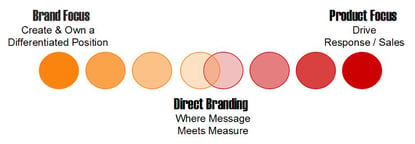Whenever I present a social media strategy workshop at a conference, I always try to get a list of the attending companies ahead of time. The purpose is to review their social media presences to find examples of companies doing smart things to include in the presentation.
And what happens with the bad examples among attendees’ social media presences?
If there are particularly egregious examples of bad social media strategy, I share those here (anonymously), pointing out the things not to do with a blog that's part of your social media strategy.
Reviewing Social Media Strategy Examples from The Manufacturing Summit
In going through this upfront social media strategy review for the Content Marketing World Manufacturing Summit session I presented with Cheri Tabel, the most striking finding was the absence of blogs and vibrant social media presences among attendees. Few attendees are taking advantage of blogs to share stories, address audience issues, and attract leads.
Among the companies who WERE blogging, however, I came across what may be the world's worst B2B blog.
4 Keys to Creating the World's Worst B2B Blog
While it would be easy to provide the URL of the offending company, I consider it bad practice to do so. So instead of pointing you to it, here are the four practices to avoid AT ALL COSTS when you introduce a blog.
1. Complaining about your blogging platform – on every page!
Your organization may be stuck with a poor blogging platform because of IT constraints that stop you from using one to maximize the blog’s benefits. Whatever you do, however, don't use the blog header to offer a mea culpa about the platform on EVERY page. There is a right and a wrong way to explain user experience limitations to your audience. Placing it in the blog header isn’t the place or the way. Figure out what you have to do to get it fixed.
2. Making it seem your company’s mission is complaining about customers
Taking a conversational, personal tone in a B2B blog is good. Selecting a tone portraying a negative perspectives of customers is bad. Instead of explaining how customers are making it difficult for the company, talk about challenges customers create for themselves and how to address them. The writer would get to the same place (i.e., describing high-performing customer behavior) without making the blog excessively negative.
3. Starting your blog post with no introduction
Every writer has an internal thought stream preceding their blog posts where they outline key points. But readers don't know how the thought stream is relevant if you don't share some of it. While you may have what you think is a fantastic rant about customers running around your head, those thoughts need to be in the post so audience members can understand your point. If you've already decided to rant, invite your readers along with you. Don't force them to jump in mid-stream.
4. Talking down to readers who aren’t as “smart” as you think they should be
Having a personality with your B2B blog is fantastic, but "condescending" isn't a personality to use. Lecturing readers on history lessons about your industry, berating them for not understanding how YOUR business works, and serving up terse explanations on how to order from and do business with you won’t make ANYONE want to come back to your blog . . . ever.
Wow
As incredible as it might seem, these four shortcomings come together a few times a quarter in the world's worst B2B blog.
And OF COURSE, when you look at the LinkedIn profile of the company’s social media lead, it explains the person is an expert. Heaven help us if the presona were a “guru.” You can only imagine how bad the blog might be then! - Mike Brown





